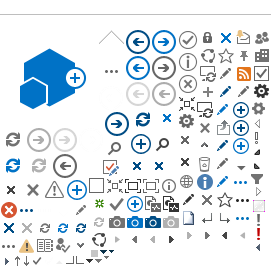Prioritized List of Projects
CCSDS Reference Architecture
- Approach: Developed as a pair of documents using the RASDS reference architecture methodology. The lower layers (1-4, and some 7) are covered by the SCCS-ARD/ADD, and include the standards developed by the CSS, SLS, SIS, and SEA Areas. The upper layers (5-7 and applications) are covered by the ASL-ADD, and include the standards developed by the MOIMS and SOIS Areas.
- Describe how all of the CCSDS application standards fit together with other communications standards, the map of the territory
- Define and refine necessary interfaces and ontology terms
- Update and revise these documents, as needed, with direct support from CSS, SLS, SIS, SEA, SOIS, and MOIMS area expert.
CCSDS Registries & Information Model
Approach: Support CCSDS registries and information models, develop a unified approach across all CCSDS working groups
- Registry Management Policy (RMP) document derived from existing SCID and MACAO registries. Provide updated WG guidelines and SANA Operator guidelines.
- Extend registry model to define core, re-usable, registries for agencies & other organizations, identified persons (head of delegation / points of contact), assigned registry management role.
- Develop other core registries for object identifiers (OID), URN, Schema, service sites & apertures, as needed.
- CCSDS wide registry information model covering all of the major defined info / data objects and their relationships
-Reference Architecture for Space Information Management (RASIM) document that encompasses the capture, management, access, and exchange of data for both flight and ground systems
Perform RASDS refresh, include Annex for SysML/UML representation
Approach: Update and refresh RASDS
- Work with ISO SC-14 to define needs for operational, physical, and service viewpoints
- Refine existing viewpoint specifications based on user experience and feedback, as well as ASL ADD developed extensions
- Include Annex for UML/SysML representation that uses the core methodology, consider Annex to describe abstraction, protocol, concrete realization relationships
- Complete RASDS revision and update now that resources are available
CCSDS XML standards
Approach: Identify source of adequate XML schema development guidelines, develop draft for CCSDS and review with CESG
- Adopt suite of schema analysis and validation tools
- Extract set(s) of common terms as library elements
CCSDS ontology (terms, definition, and relationships; glossary revision)
Approach: Complete analysis, work key issues within WG as part of CCSDS Reference Architecture
- Based on existing CCSDS Glossary, with refinements
- Deploy On-line; queryable, leverages RASDS & QUDV as core
- Extensible with other domain ontologies, specializations and extensions
- Revised and reviewed with the other WGs
- Work integration of TC20 / SC14 terminology and develop a more formalized governance approach with their support


